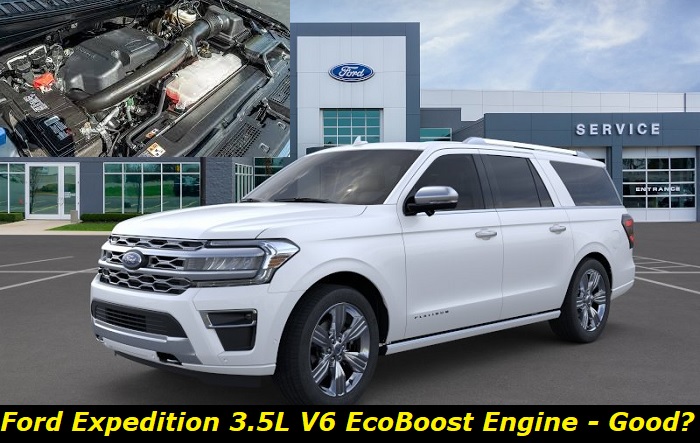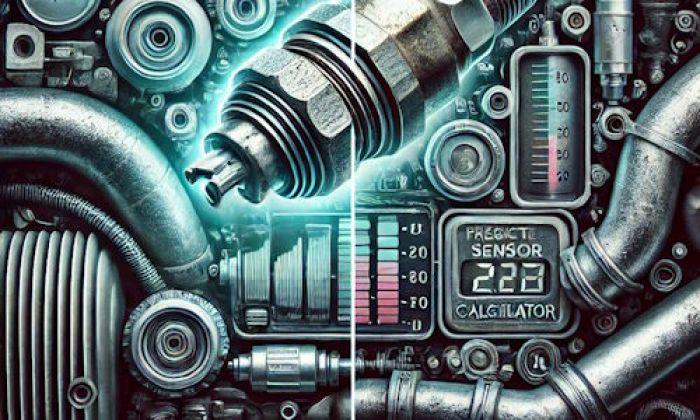When it comes to full-size SUVs, we can't forget about the mighty Ford Expedition. This is a vehicle with a history that has been made in the US since 1997 and has been quite popular for all this time. While in its best years the model sold over 200,000 units a year, in the recent decade, sold has consistently sold over 60,000 Expedition models a year. Which is not bad at all!
Today, I will tell you more about the 3.5 EcoBoost V6 engine that powers the new Ford Expedition and will outline its most common problems as well as its advantages for a buyer. This is certainly the engine you should consider if you want a powerful and reliable powerplant that gives you enough torque.

Key features and my opinion about the engine
- Production years:2010-now
- Average lifespan of 3.5L EcoBoost:190,000-220,000 miles
- Fuel supply type:direct injection
- Power range:310-660 hp
- Fuel efficiency:average
- Engine block material:aluminum
- Engine reliability score:medium
- The most common problems:intercooler problems, timing chain stretching, carbon buildup on intake valves, coolant and oil leaks.
What should you know about the 3.5L EcoBoost engine in the Expedition?
First of all, you should know that there are three levels of this engine available in the new Expedition. Ford decided not to offer different engines but to code the same engine in different ways to provide you with numerous versions of powerplants for various trims of the Expedition. So, you can get 375, 400, or 440 horsepower and 470, 480, and 510 lb-ft of torque correspondently. All engines are based on the same 3.5 EcoBoost but have different ECU coding.
Basically, there is one option of the engine, so I won't write different articles for these three versions. Everything I say in this article can be applied to all three versions of the 3.5 EcoBoost that powers the Expedition.
Here are some key facts to consider:
- this is the 3.5L V6 EcoBoost engine with a turbocharger that offers 375 to 440 hp of power and 470 to 510 lb-ft of torque;
- this is the second-gen 3.5 EcoBoost that also powers the Ford GT, Ford F-150, and Lincoln Navigator;
- the engine offers additional port injection while being initially the direct injection engine to avoid carbon buildup;
- the turbocharger became "smarter", it has now an electronically powered wastegate and provides a higher boost than before;
- there are two timing chains - each driving the separate bank of the engine which made the unit more durable, as experts say;
- the engine uses a VCT valve timing system which is still faulty and Ford had a lot of problems with it issuing several bulletins and redesigns;
- the engine is paired to the 10-speed SelectShift automatic transmission which is pretty durable and reliable;
- the Ford Expedition offers about 16 MPG in the city and 23 MPG on highways, but this may change according to the chosen version.
Well, gas mileage is not perfect. The VCT system also causes a lot of questions. But eventually, Ford managed to address almost all problems of the first-generation 3.5 EcoBoost and made a cool engine that is pretty powerful, able to tow quite a lot of weight, and more or less reliable. The engine is not bad at all and it usually gets positive feedback.
Yes, it's not the greatest option you can think about. I also would love to see a naturally aspirated V8 rather than the turbocharged V6 under the hood of the Expedition. But time has changed and now we have to think about ecology more than about our wish to have a bulletproof engine in our SUV.
How long will the 3.5 EcoBoost survive in the Expedition
Well, this is a durable engine but it can fail because of poor attention from the owner. I saw pretty fresh Expedition SUVs hanging on lifts in numerous shops without their original engines under their hoods. The reasons were different - overheating, poor VCT that wasn't addressed for a long time, stretched chain, etc.
But if you maintain this engine and address its problems timely, the 3.5L V6 EcoBoost will live quite a long and happy life and will get you over 250,000 miles without serious repairs and extremely expensive services.
Also, the transmission is pretty durable. This 10-speed transmission was developed by Ford exactly for bigger and more powerful engines and it can withstand much more than you will need it to withstand. This is the classic automatic transmission with basically nothing in it that can quickly break. But at about 150,000 miles, it will still need some repairs to last longer.
Overall, the 3.5L V6 powerplant is not bad in terms of durability. But it needs your attention and proper maintenance. Without this, you may lose the engine very quickly with no chance of repairing it at a low cost.
What are the common problems with the 3.5L V6 in the Expedition?
Unfortunately, this is not a problem-free engine. It has quite a lot of common issues that should be remembered at all times. Whenever you see or hear the symptoms of any of these issues, you should immediately go to the dealership or to a trusted repair shop and have the vehicle inspected. This is the only way to prevent the problem from developing into a really serious issue.
Here, I want to outline the most common problems that can occur with the 3.5L V6 EcoBoost engine in the new Expedition:
1. VCT problems
Variable valve timing is not Ford's strongest side. We've seen dozens of engines that failed exactly because of different timing technologies malfunctioning. Well, VCT problems can start bothering you as soon as at 40,000 miles. They may be so serious that the car won't accelerate or won't even start.
There is one solution for the second-gen 3.5 EcoBoost engine. Install the new VCT with the ML3Z prefix. This is the latest update of the VCT from Ford and this version has not been reported to have some problems yet.
2. Timing chain still may stretch
Although this engine now has two timing chains - one for each bank - it can still stretch. Each chain is now a little thinner than the common chain that was used in the previous 3.5 EcoBoost version. Also, when one chain fails, the other one still can't allow your engine to drive. So, basically, this improvement with two chains doesn't make the engine more reliable.
I recommend replacing the timing chains and tensioners at least every 100,000 miles. Or you should replace it once you hear engine rattling and other symptoms of bad and stretched chains.
3. Ignition system problems
I wouldn't say this is the real problem but if you don't maintain your EcoBoost engine, it will develop into a real issue. The ignition coils and spark plugs in the 3.5L V6 in your Ford Expedition won't live long. I know one owner of the new Expedition and he replaces spark plugs every 20,000 miles and coils last about twice as long.
The problem is that the spark plugs and coils are quite expensive. Also, I don't recommend DIY change if you don't have the proper tools and experience. You may easily overtighten the plug and create problems with the head.
4. Minor issues
Unfortunately, this engine will get on your nerves with a lot of minor problems. The most common ones are fuel pressure issues due to HPFP wear and tear, fuel injection problems because of the "smart" system that changes between port injection and direct injection, and also electronic failure.
Whenever you feel that the engine is having some problem, you should immediately have the vehicle inspected and repaired to avoid fatal issues.
Can you prolong the life of the engine?
The Ford Expedition engine is not bad and all you need to do is to maintain it properly. This will allow you to drive it for at least 250,000 miles. But what if you want to get more from it? In this case, you will need to follow several tips.
Here they are:
- Avoid aggressive driving. This engine is good for towing or off-roading but it's bad for motorsport.
- Maintain the engine more often than needed. Ford may not tell you that the best interval for an oil change is 8-10 thousand miles, all filters should be changed with the same intervals.
- Check oil levels regularly. This V6 engine can burn some oil, especially when the mileage is high, so check the levels to avoid driving with low oil levels.
- Pay attention to any imperfections. If your engine rattles, takes long to start, loses power, or makes bad noises, it's time to go to the dealership.
- Buy OEM parts. There are quite a lot of aftermarket parts available on the market and they are cheap, but only OEM parts will let your EcoBoost engine last long.
I hope now you know enough about the 3.5L V6 EcoBoost to make the right choice. You shouldn't think this is the best engine in the world but you should also understand its main advantages. I can really recommend the 3.5 EcoBoost engine if you are a careful driver and are going to care about this engine as needed.
About the authors
The CarAraC research team is composed of seasoned auto mechanics and automotive industry professionals, including individuals with advanced degrees and certifications in their field. Our team members boast prestigious credentials, reflecting their extensive knowledge and skills. These qualifications include: IMI: Institute of the Motor Industry, ASE-Certified Master Automobile Technicians; Coventry University, Graduate of MA in Automotive Journalism; Politecnico di Torino, Italy, MS Automotive Engineering; Ss. Cyril and Methodius University in Skopje, Mechanical University in Skopje; TOC Automotive College; DHA Suffa University, Department of Mechanical Engineering






Add comment